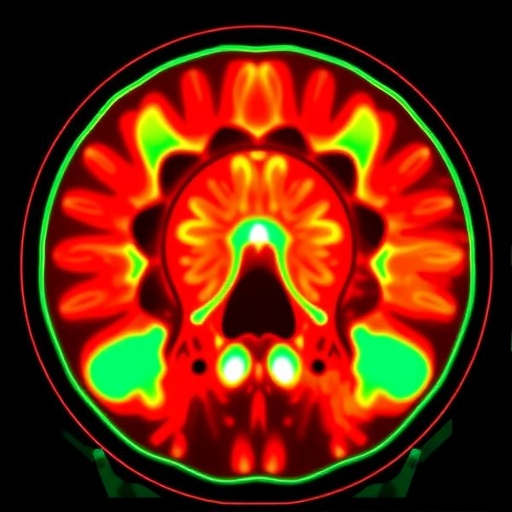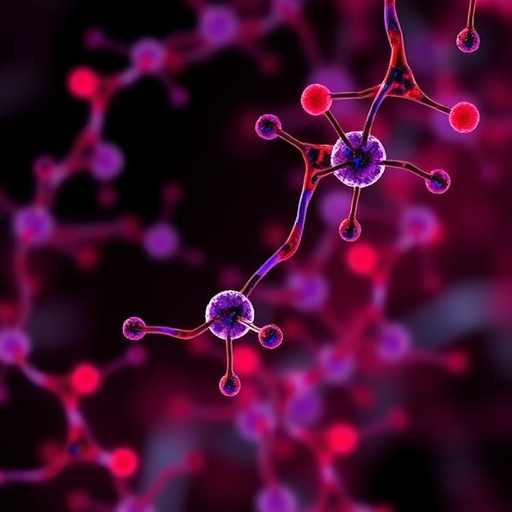Scientists at Harvard Medical School and the Dana-Farber Cancer Institute have developed a method that exploits the multitargeted nature of a chemical inhibitor to pinpoint vulnerabilities within cancer cells.
When signaling pathways within cells are triggered, proteins activate through a chain reaction, like a row of tumbling dominoes, until the final protein influences some cellular function. In some tumors, multiple signaling pathways drive cell growth and survival. This redundancy means that if one pathway ceases activity, another could continue driving cancerous behavior. Thus, drugs with the ability to shutdown multiple pathways at the same time could be advantageous.
Many cancer drugs, including some clinically approved kinase inhibitors, were originally designed to block the function of specific molecules but it is now known that their benefits might not always stem from the inhibition of single targets.
“Many of these covalent inhibitors are in fact some degree polypharmacological in their action and they can target multiple things,” said Nathanael Gray, a professor of biological chemistry and molecular pharmacology at Harvard Medical School and the Dana Farber Cancer Institute in Boston, Massachusetts. “They’re advertised as working through one target, but people in the field know that several other targets contribute.”
In a study published in the Journal of Biological Chemistry, a team researchers led by Gray identified key molecules that support the survival of a specific type of lung cancer cells. By analyzing the response of these cells to a cancer-killing kinase inhibitor with numerous targets, they were able to show that the anticancer effects were likely elicited by simultaneous inhibition of specific molecules in two signaling pathways. This approach to drug-target discovery could be useful for designing drugs that selectively attack multiple proteins, which is beneficial for managing certain tumors.
Although kinase inhibitors hit multiple targets, most were not designed to do so, which means they might bind to molecules unnecessarily and lead to adverse effects. And because it has been unclear which combinations of targets would have the most desirable effects, it has been challenging for researchers to purposefully design multitargeted drugs for cancer, Gray said.
To allow better drug design, Gray sought to discover which of the many buttons pushed by these inhibitors enables their anticancer effects. In a study to be published later this year, Gray and his lab investigated the kinase inhibitor SM1-71 and, using a suite of chemical proteomic and cellular techniques, showed that it actually binds to dozens of kinases, some of which are involved in critical signaling pathways that support cell survival and growth.
“It was sort of like a stick of dynamite and really could hit a lot of different targets,” Gray said.
In the study published in JBC, the researchers exposed different types of cancer cells to SM1-71 and found that the drug was highly toxic to a specific line of lung cancer cells with mutated KRAS protein, which is common in some tumors and leads to constant activation of signaling pathways that drive cell growth. The ability of the inhibitor to kill these cells in spite of this mutation suggested that targets in several pathways were being hit, Gray said.
To find which inhibitory interactions were curbing cancer activity, the researchers first identified which kinases in their previously generated list of SM1-71 targets were known to be key signaling proteins for cell growth and survival. They then narrowed down these candidates with Western blotting, which showed if any of these proteins from the cancer cells were actually being inhibited, and saw that proteins in two critical pathways were indeed being blocked.
The authors then applied various kinase inhibitors used in research and the clinic to see if specifically inhibiting any combination of these proteins would replicate the effects that SM1-71 had on the cancer cells. In the end, inhibiting MEK1/2 and IGF1R/INSR proteins at the same time demonstrated similar effects, suggesting these are crucial targets in this lung cancer line, Gray said.
SM1-71 itself would not likely be viable in humans because it binds to too many proteins and can lead to collateral damage, Gray said. But uncovering its most important targets within specific pathways could aid the design of future drugs that can shutdown multiple signaling pathways in tumors.
“The next step would be to try to preserve the efficacy driving targets while getting rid of targets that may be contributing to the toxicology,” Gray said.
###
DOI: 10.1074/jbc.RA118.006805
This work was supported by National Institutes of Health Grants P50GM107618, U54-CA225088, and U54-HL127365; a Jonathan M. Goldstein and Kaia Miller Goldstein systems pharmacology fellowship; and a Linde Family gift.
Other authors on this study include Suman Rao, Guangyan Du, Marc Hafner, Kartik Subramanian and Peter K. Sorger.
About the Journal of Biological Chemistry
JBC is a weekly peer-reviewed scientific journal that publishes research “motivated by biology, enabled by chemistry” across all areas of biochemistry and molecular biology. The read the latest research in JBC, visit http://www.
About the American Society for Biochemistry and Molecular Biology
The ASBMB is a nonprofit scientific and educational organization with more than 11,000 members worldwide. Most members teach and conduct research at colleges and universities. Others conduct research in government laboratories, at nonprofit research institutions and in industry. The Society publishes three journals: the Journal of Biological Chemistry, the Journal of Lipid Research, and Molecular and Cellular Proteomics. For more information about ASBMB, visit http://www.
Media Contact
Jonathan Griffin
[email protected]
http://dx.




